Gardening, whether you’re just starting out or have years of experience under your belt, is a journey filled with endless discovery and the simple joy of nurturing life. With the right tools in hand, this journey becomes not only more rewarding but also more manageable, allowing you to focus on the delightful process of watching your garden flourish.
In “Top 10 Gardening Tools Every Gardener Needs,” we delve into essential tools that will transform the way you garden. These carefully selected tools are like trusted companions, each playing a vital role in helping you achieve a thriving garden, from the first planting to the bountiful harvest.
Imagine the satisfaction of effortlessly pruning, planting, and weeding, knowing you have the best tools to support your gardening endeavors. With this guide, you’ll gain practical insights and confidence, ensuring your garden is not just a patch of land, but a vibrant reflection of your passion and hard work.
Pruning Shears (Precision Cutting Blades)
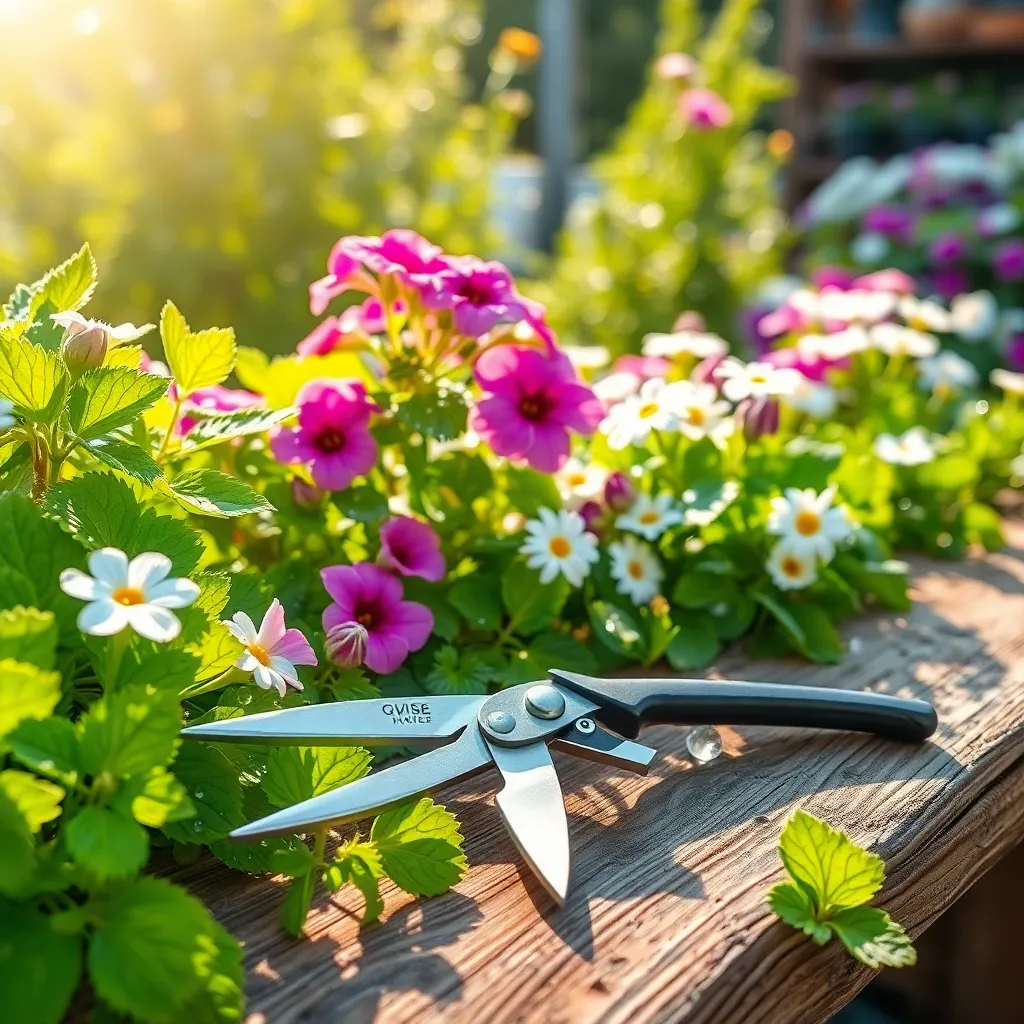
Pruning shears with precision cutting blades are indispensable for maintaining the health and aesthetics of your garden. They are specifically designed to make clean cuts on live plants, which helps prevent disease and encourages healthy growth.
When selecting pruning shears, look for those with sharp, durable blades made from high-carbon steel, as these will stay sharp longer and provide cleaner cuts. For beginners, bypass pruners are generally recommended because they make precise cuts that are less likely to damage plant tissue.
Always ensure your shears are clean and sharp before use to avoid crushing plant stems. Regular maintenance is crucial; wipe the blades with a cloth soaked in rubbing alcohol after each use to prevent the spread of plant diseases.
For more advanced gardeners, understanding the proper timing and technique for pruning various plants is key. For example, prune flowering shrubs and trees after they bloom to maintain their shape and promote next year’s blooms.
Garden Kneeler and Seat (Comfortable and Foldable Design)
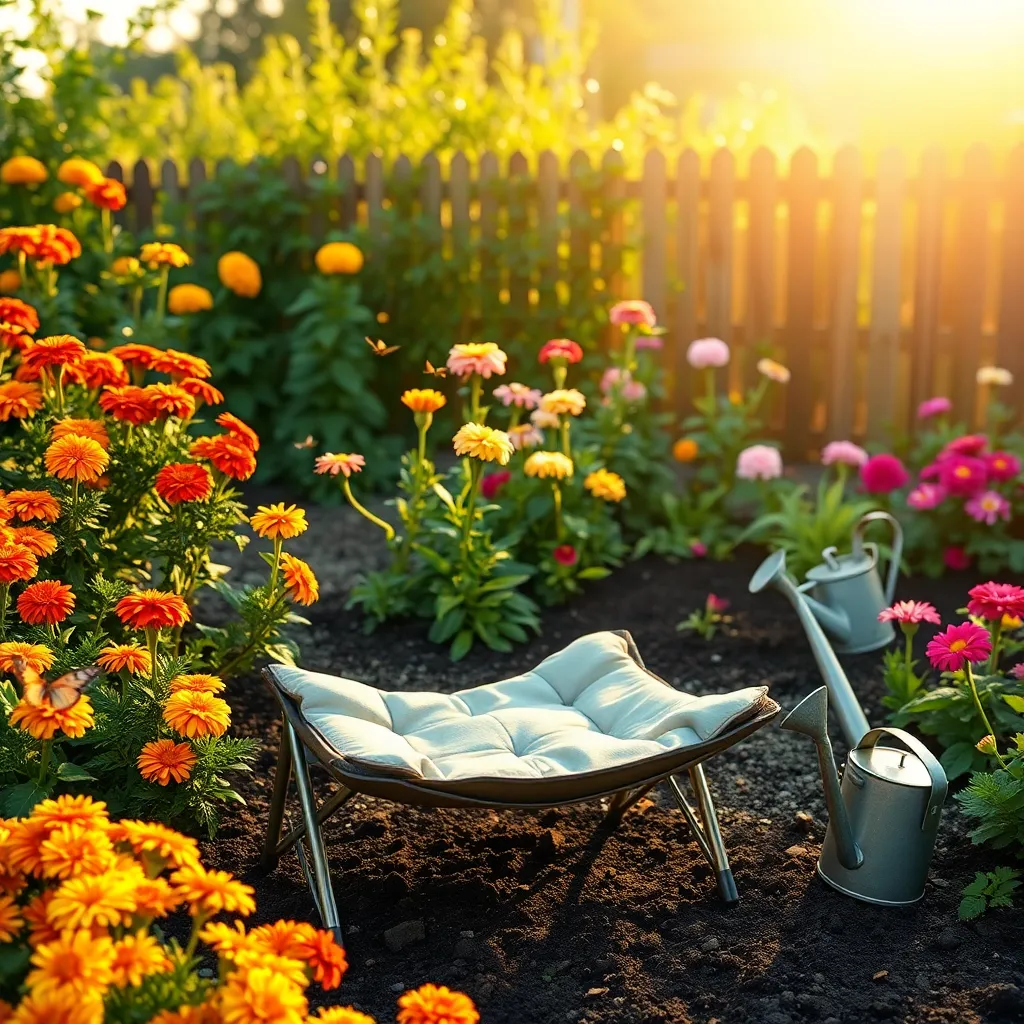
Using a garden kneeler and seat can significantly enhance your gardening experience by providing comfort and support. This tool is particularly beneficial for tasks that require kneeling, such as planting seeds or weeding, allowing you to work longer without discomfort.
Many garden kneelers come with a foldable design, making them easy to store and transport. This feature is especially useful if you have limited space in your shed or garage, as it allows for convenient storage when not in use.
Additionally, the padded cushion on these kneelers provides extra comfort, reducing strain on your knees and back. For those with mobility issues, the side handles offer helpful support, making it easier to stand up after kneeling.
Consider choosing a kneeler with a dual-purpose design, enabling it to transform into a seat. This versatility allows you to comfortably tackle various gardening tasks, from deadheading flowers to harvesting vegetables.
Soil pH Tester (Accurate and Easy-to-Use)
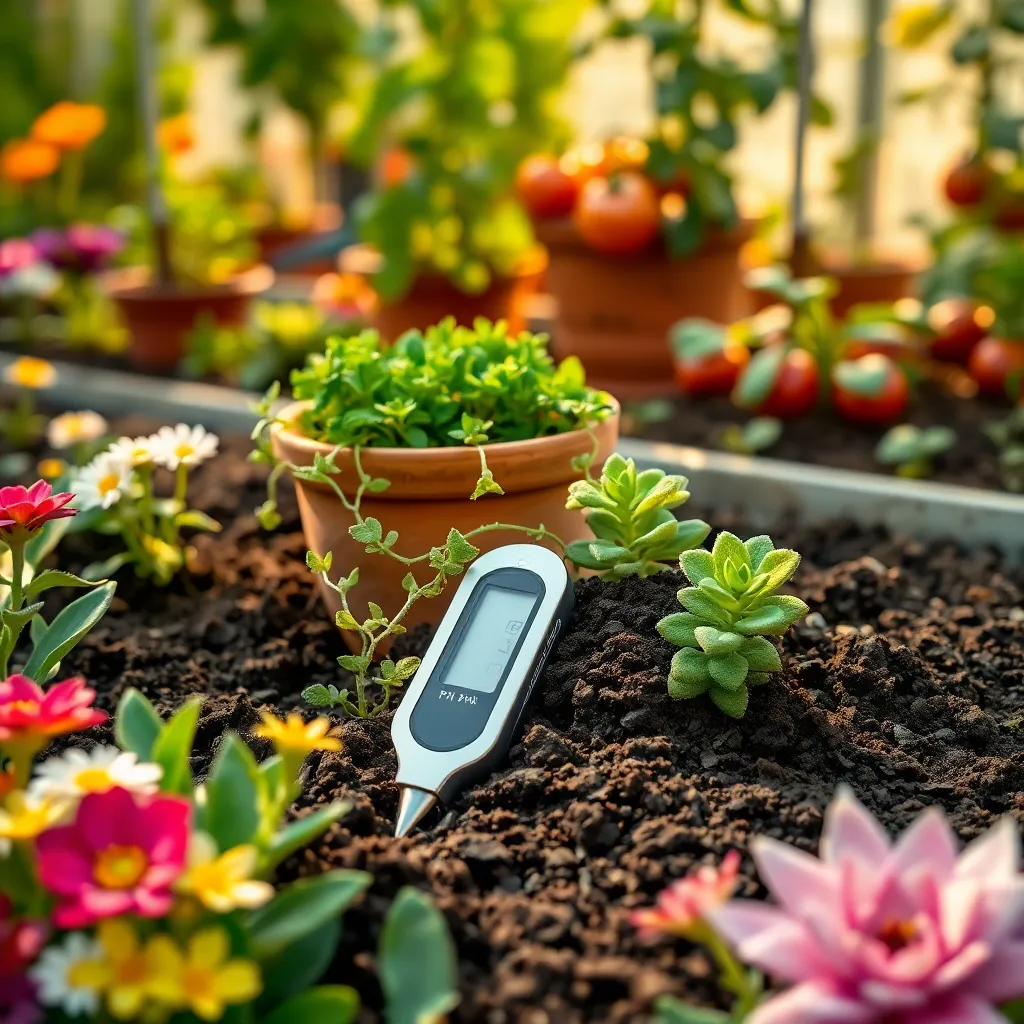
Knowing the pH level of your soil is crucial for healthy plant growth, and a soil pH tester is an indispensable tool for gardeners. This device helps you understand the acidity or alkalinity of your soil, which directly affects nutrient availability to plants.
Most plants prefer a slightly acidic to neutral pH, ranging from 6.0 to 7.0. Using a pH tester, you can easily determine whether your soil needs amendments, such as lime to raise pH or sulfur to lower it.
When using a soil pH tester, it’s essential to test multiple areas of your garden, as soil conditions can vary. For accuracy, take samples from different spots and average the results to get a comprehensive understanding of your garden’s soil.
Advanced gardeners might use the tester to tailor their soil amendments for specific plants. For instance, blueberries thrive in more acidic soil, so adjusting the pH to around 4.5 to 5.5 can significantly boost your harvest.
Adjustable Watering Wand (Reach and Flow Control)
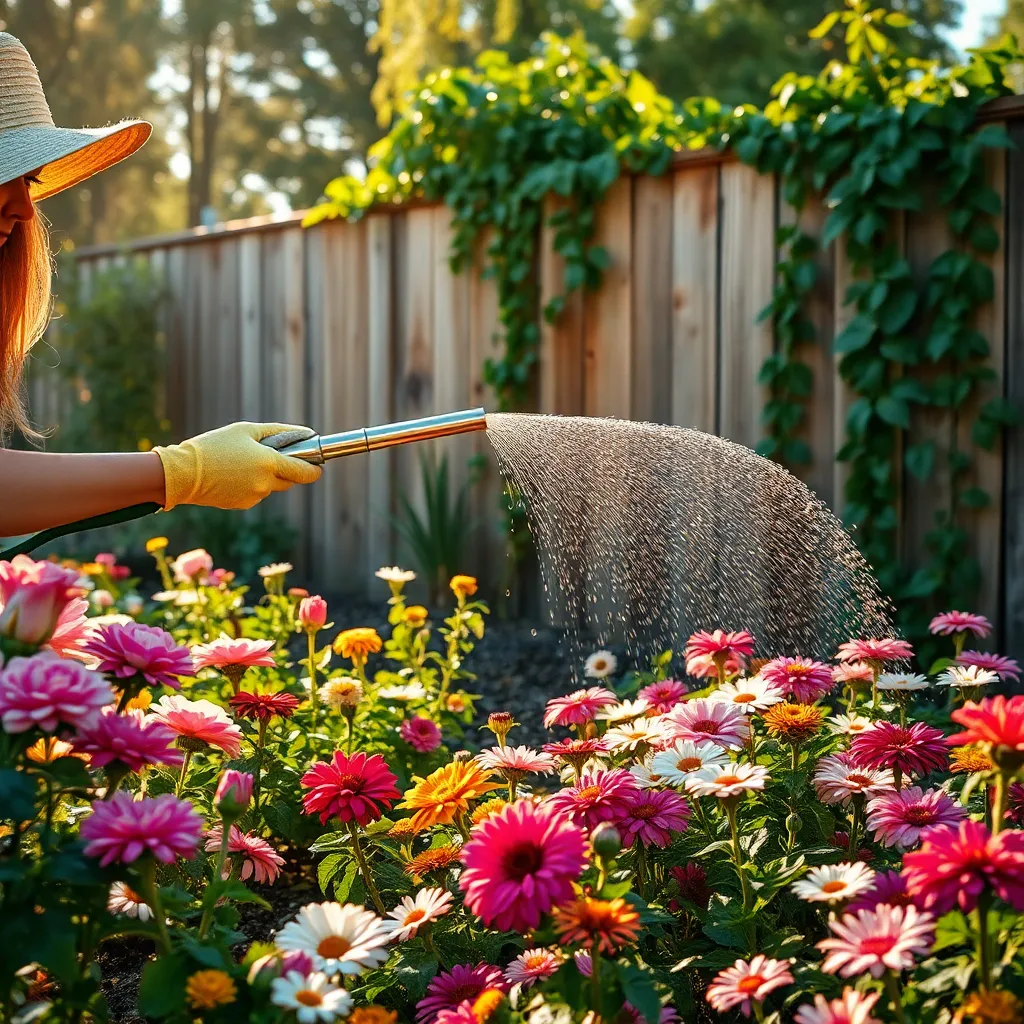
An adjustable watering wand is a versatile tool that can significantly improve your watering efficiency. With its extendable reach and adjustable flow control, it allows you to water plants at different heights and distances without straining your back.
Using a watering wand is especially beneficial for hanging baskets and deep garden beds. The adjustable nozzle lets you switch between a gentle shower for delicate seedlings and a stronger spray for more robust plants, ensuring optimal hydration.
For beginners, mastering the use of a watering wand can help prevent overwatering, which is a common mistake. By controlling the flow rate, you can ensure that you’re providing just the right amount of moisture, reducing the risk of root rot.
Experienced gardeners can leverage the wand’s reach to efficiently water under dense foliage where moisture is often needed most. This tool is perfect for maintaining healthy plants, as consistent and targeted watering helps improve plant resilience and growth.
Heavy-Duty Wheelbarrow (Rust-Resistant and Sturdy)
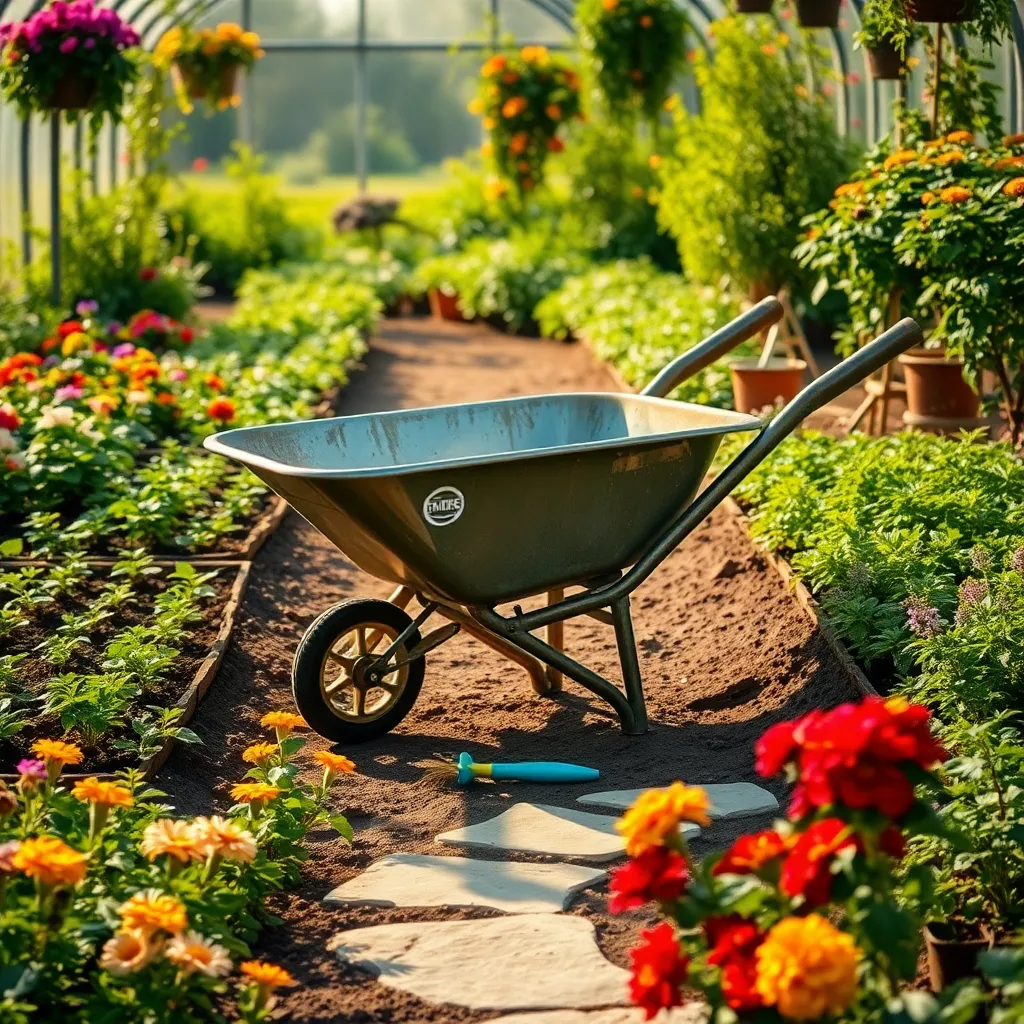
A heavy-duty wheelbarrow is an essential tool for any gardener, providing the strength and stability needed for transporting heavy loads with ease. Opt for a rust-resistant model to ensure longevity, especially if you frequently work in damp or rainy conditions.
When choosing a wheelbarrow, look for one with a sturdy frame and durable tires that can navigate various terrains smoothly. Pneumatic tires are highly recommended for their ability to cushion the load, making it easier to maneuver through uneven garden paths.
For those working with large amounts of soil, compost, or mulch, a wheelbarrow with a capacity of at least 6 cubic feet is ideal. This size allows you to move substantial quantities in fewer trips, saving you time and effort in your gardening tasks.
Ensure your wheelbarrow is easy to handle by selecting one with ergonomic handles that reduce strain on your wrists and back. Regular maintenance, such as checking tire pressure and greasing moving parts, will keep your wheelbarrow in top condition and extend its lifespan.
Garden Gloves with Claws (Built-In Digging Tools)
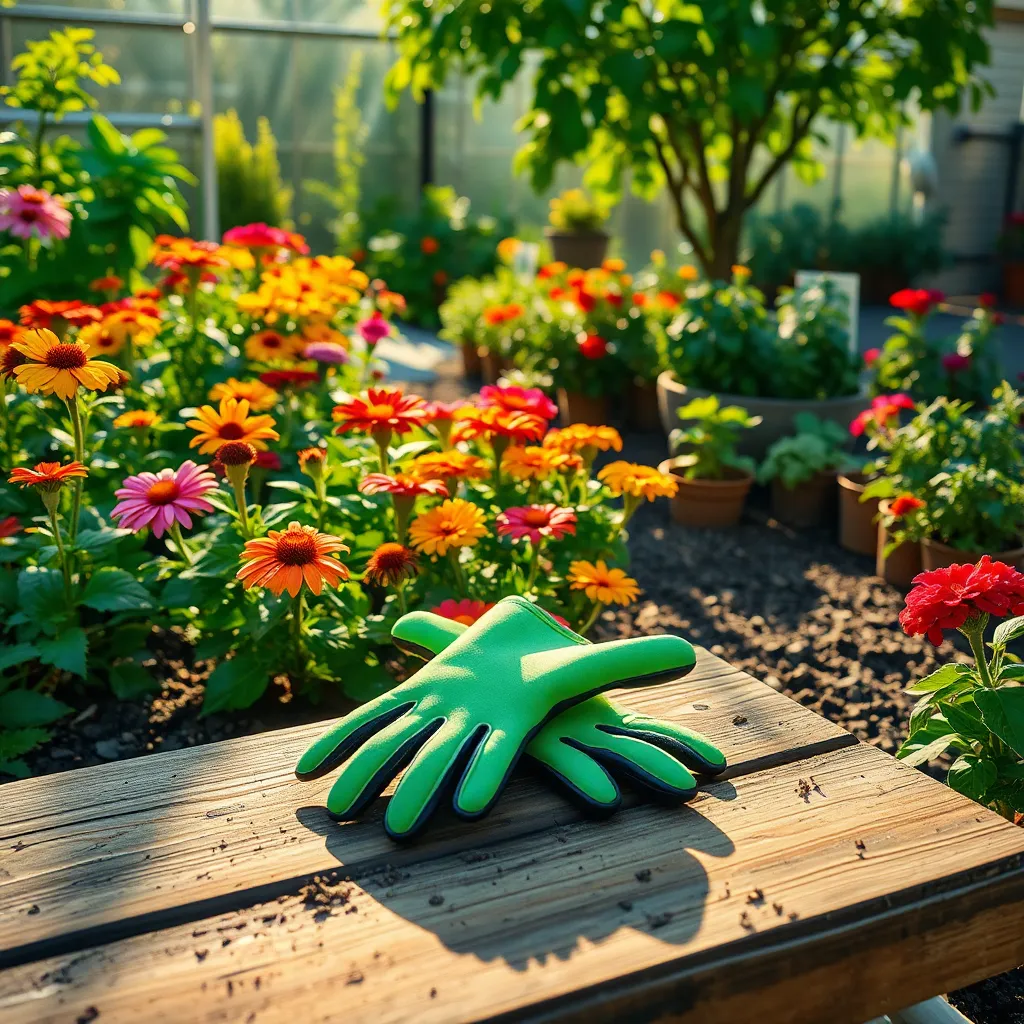
Garden gloves with claws are a revolutionary tool, especially for gardeners who love to dig without the hassle of carrying multiple tools. These gloves are designed with built-in plastic claws on the fingertips, allowing you to easily dig, plant, and rake without switching tools.
One of the primary benefits of these gloves is their ability to protect your hands while performing heavy-duty tasks. Made from durable, waterproof material, they keep your hands clean and dry, even when working with wet soil or compost.
For beginners, using these gloves can simplify the process of planting seeds or seedlings. You simply need to put them on and start digging small holes, ensuring you maintain a consistent depth for each seed for uniform growth.
Advanced gardeners will appreciate the gloves’ versatility, as they allow for precision work in tight spaces. Whether you’re working in a raised bed or container garden, these gloves can help you maneuver around delicate plants without causing damage.
Multi-Purpose Garden Hoe (Versatile and Long-Handled)
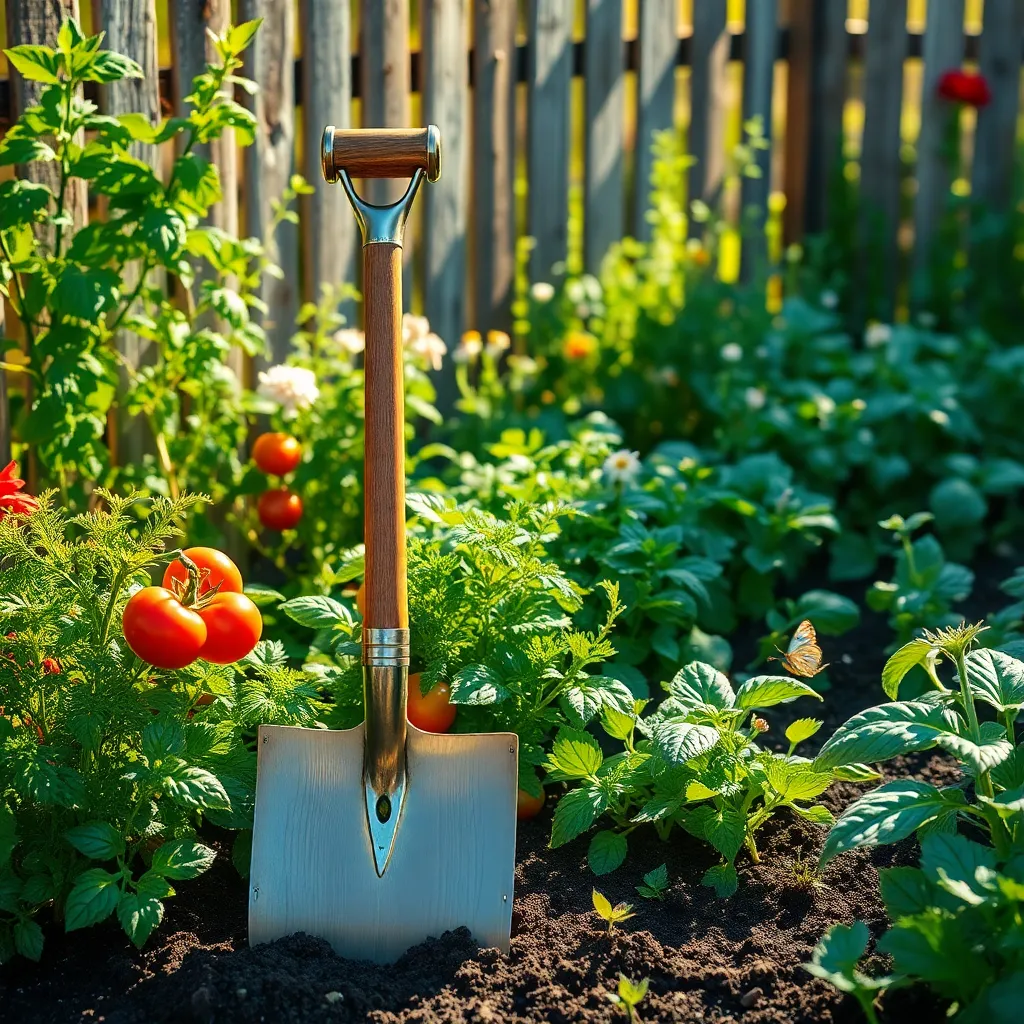
Among the most versatile tools in a gardener’s arsenal, the multi-purpose garden hoe is invaluable for various tasks. Its long handle allows for comfortable, extended use, making it ideal for maintaining large garden beds without straining your back.
With a sharp blade, this hoe is perfect for breaking up compacted soil, allowing your plants to access essential nutrients and water. Regularly aerating your soil with this tool can dramatically improve root growth and overall plant health.
Beyond soil preparation, the garden hoe is excellent for weeding, efficiently removing unwanted plants without disturbing your desired vegetation. Consider using it early in the morning or after rain when the soil is softer, making weeds easier to uproot.
For those with more experience, mastering the hoe can help in creating precise seed furrows for planting. Adjusting your technique can also aid in effective contouring, which is beneficial for managing water runoff and improving irrigation efficiency.
Compost Tumbler (Efficient Decomposition Process)
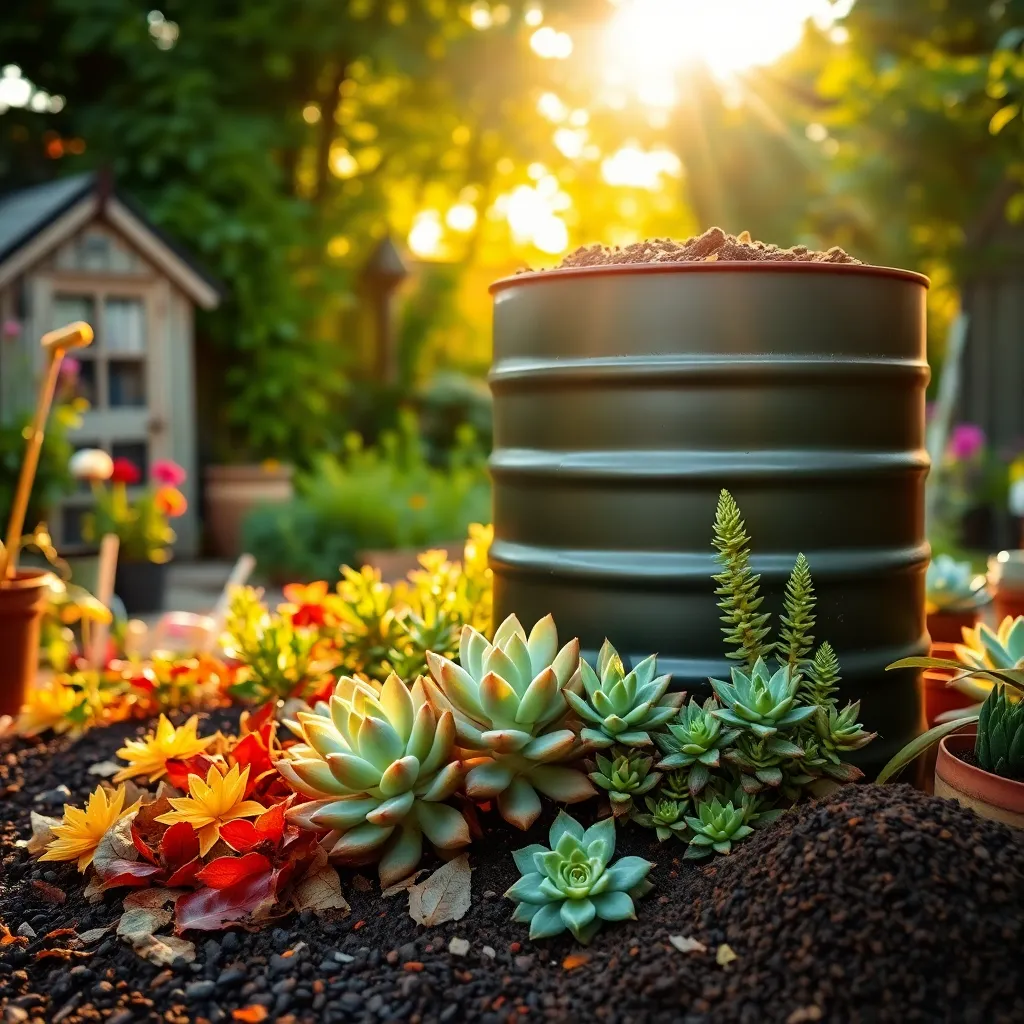
Utilizing a compost tumbler in your garden can significantly enhance the speed of decomposition, turning organic waste into nutrient-rich compost in no time. These devices are especially effective because they allow you to easily mix the compost, ensuring optimal aeration and moisture levels for faster breakdown.
A compost tumbler is ideal for gardeners who want to efficiently recycle kitchen scraps and garden waste. To maximize the benefits, aim to maintain a balanced mix of green materials (like vegetable scraps and grass clippings) and brown materials (such as dried leaves and twigs).
Begin by adding equal parts of green and brown materials to your compost tumbler, and make sure to add a bit of water if the mixture looks dry. Remember to rotate the tumbler every few days, as this will help speed up the process by introducing air into the mix, which is crucial for decomposition.
For more advanced gardeners, consider using a thermometer to monitor the internal temperature of your compost, ensuring it stays within the ideal range of 135°F to 160°F. This practice will help you know when to adjust moisture levels or add more materials, keeping your composting process efficient and effective.
Plant Support Stakes (Durable and Weatherproof)
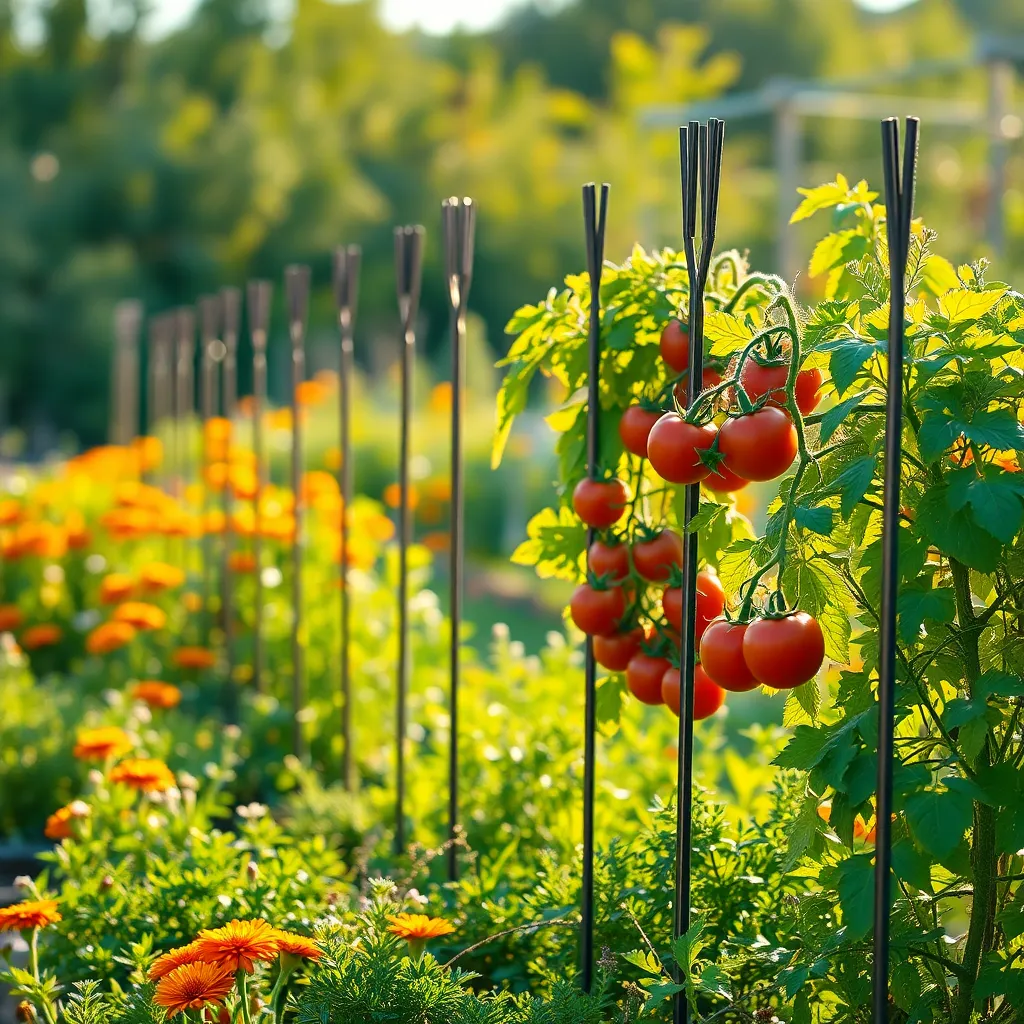
Plant support stakes are essential for maintaining the health and structure of your growing plants. They provide necessary support for tall or heavy plants, preventing them from bending or breaking under their own weight.
For beginners, using stakes is a straightforward way to ensure your plants grow upright and receive adequate sunlight. It’s important to choose durable and weatherproof stakes, such as those made from coated metal or treated bamboo, to withstand various weather conditions.
When installing stakes, position them about one foot away from the plant’s main stem, ensuring they’re deep enough in the soil to hold firm against wind. Use soft ties or garden twine to gently secure the plant to the stake, avoiding tight knots that could damage the stem.
Advanced gardeners might explore staking techniques like the “Florida weave” for tomatoes, which involves weaving twine between stakes and plants to offer robust support. Regularly check and adjust the ties as plants grow to prevent constriction and ensure continued support.
Garden Tool Organizer (Portable and Space-Saving)
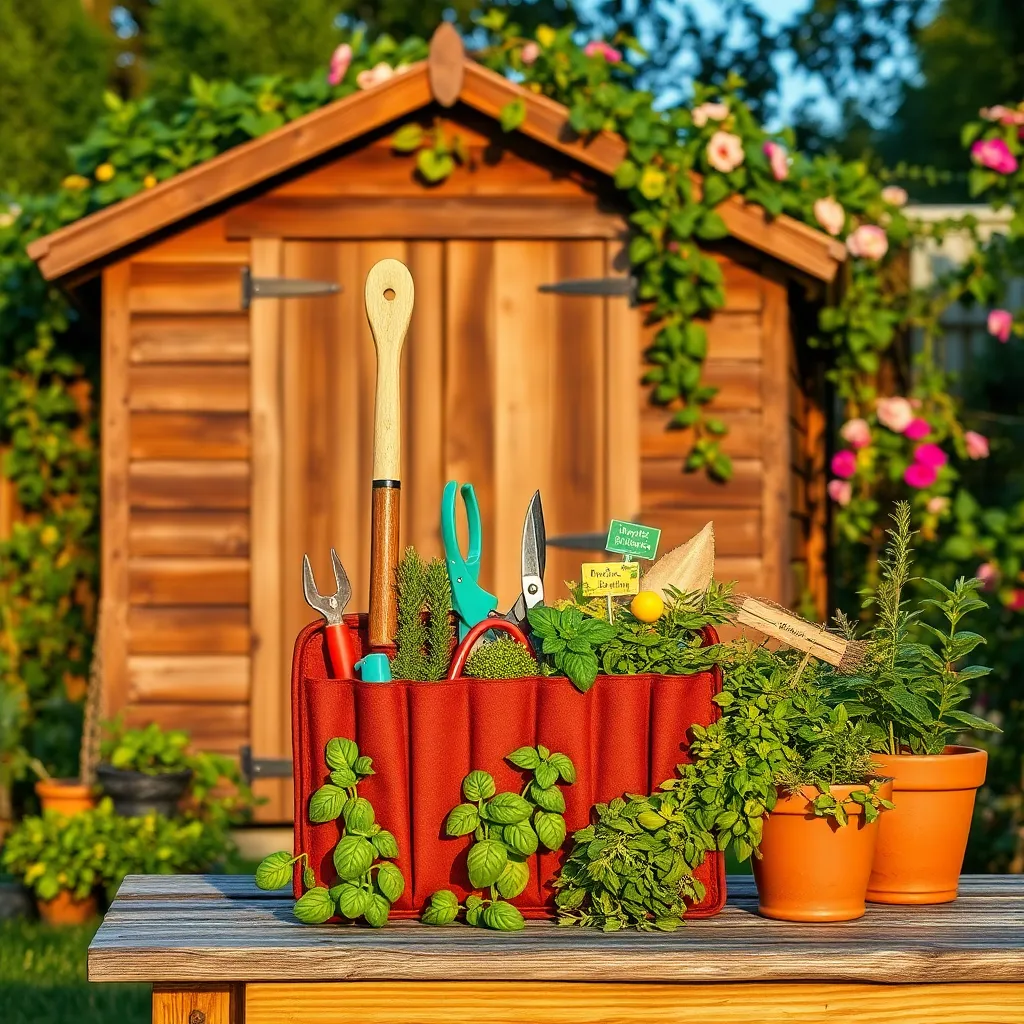
A portable and space-saving garden tool organizer is an essential addition to any gardener’s toolkit. It allows you to keep your tools neatly arranged, ensuring that you can easily find what you need when you need it. Choosing an organizer with multiple compartments can help you categorize your tools by size or type, making it easier to grab the right one in a pinch. For those with limited space, consider a collapsible organizer that can be tucked away when not in use.
Investing in a quality organizer can significantly enhance your gardening efficiency. Opt for one made from durable materials like heavy-duty fabric or plastic to withstand frequent use and exposure to the elements. Look for features such as waterproof pockets, which are perfect for storing sensitive items like seed packets or plant labels. A portable organizer with a sturdy handle or wheels can also make transporting your tools around the garden a breeze.
For gardeners with larger tool collections, consider an organizer with customizable storage options. Removable dividers and adjustable compartments allow you to tailor the organizer to fit your specific needs and tools. This flexibility is beneficial for accommodating larger tools like pruning shears and trowels, as well as smaller items such as plant ties and seed packets. Keeping your tools organized not only saves time but also extends their lifespan by preventing unnecessary wear and tear.
Beginners might start with a smaller organizer that fits their initial toolset, adding more storage as their collection grows. As your gardening skills advance, you can upgrade to a more comprehensive system that includes space for advanced tools like soil testers and moisture meters. Remember, the key to successful gardening is efficiency and preparedness, and a well-organized tool kit is a foundational step towards achieving that. Whether you’re tending to a small urban garden or a sprawling backyard oasis, a garden tool organizer is a smart investment that supports your gardening journey.
Conclusion: Growing Success with These Plants
In nurturing the garden of relationships, ten essential tools stand out: effective communication, patience, active listening, empathy, trust, support, understanding, compromise, shared goals, and appreciation. Just as a gardener needs a trowel or pruner, these tools are indispensable in cultivating a flourishing relationship. Whether you’re sowing the seeds of a new bond or tending to a long-established connection, these concepts serve as your guide to ensure growth and resilience.
To take immediate action, choose one area to focus on today, such as enhancing your communication or practicing empathy, and actively incorporate it into your interactions. This small step can create meaningful shifts in your relationship dynamics.
I invite you to save or bookmark this article for future reference. Relationships, like gardens, require ongoing care and attention, and having this guide handy will help you stay on course. Remember, every act of nurturing brings you closer to blossoming success in your relationships. By investing in these foundational tools now, you’re paving the way for a future filled with deep, rewarding connections. Let this be the start of a journey towards lasting relational harmony.

